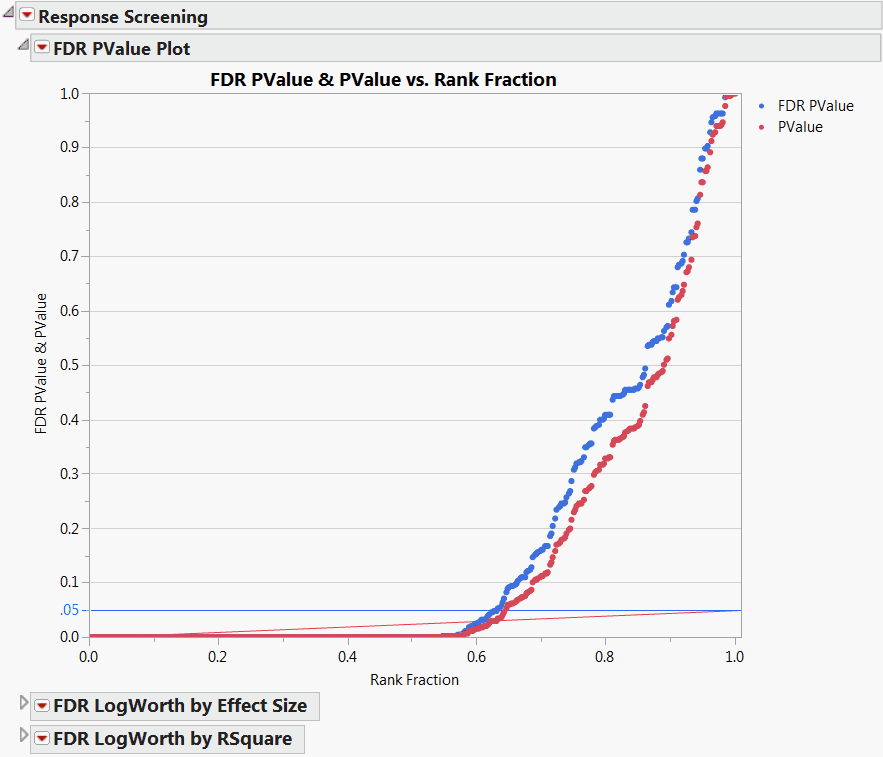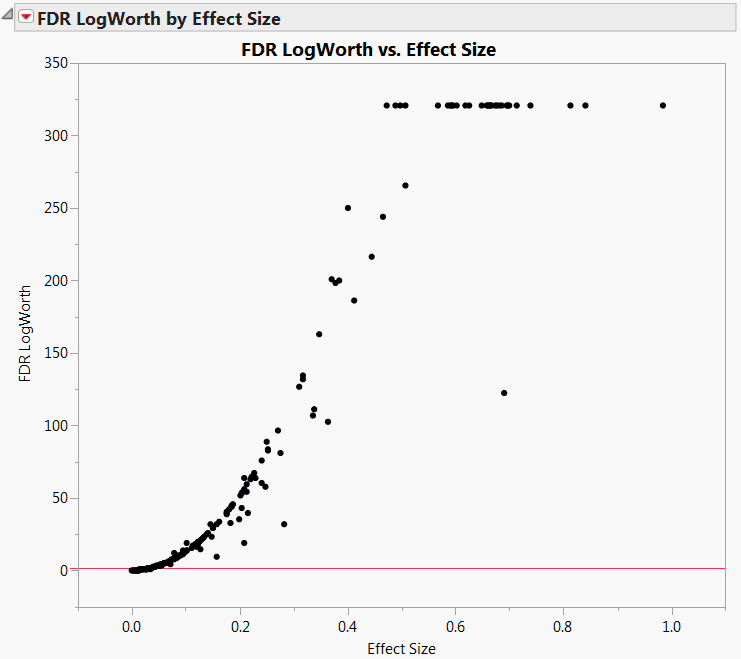The Response Screening report consists of several Graph Builder plots. These plots focus on False Discovery Rate (FDR) statistics. For details, see The False Discovery Rate.
A blue horizontal line shows the 0.05 significance level. Note that you can change this level by double-clicking the y-axis, removing the current reference line, and adding a new reference line.
A red increasing line provides an FDR threshold for unadjusted p-values. A p-value falls below the red line precisely when the FDR-adjusted p-value falls below the blue line. This enables you to read significance relative to the FDR from either the adjusted or unadjusted p-values.
FDR PValue Plot shows the FDR PValue Plot for the Probe.jmp sample data table. Note that some tests are significant according to the usual p-value but not according to the FDR p-value.
When you have large effects, the associated p-values are often very small. Visualizing these small values graphically can be challenging. When transformed to the LogWorth (-log10(p-value)) scale, highly significant p-values have large LogWorths and nonsignificant p-values have low LogWorths. A LogWorth of zero corresponds to a nonsignificant p-value of 1. Any LogWorth above 2 corresponds to a p-value below 0.01.
In the FDR LogWorth by Effect Size plot, the vertical axis is the FDR LogWorth and the horizontal axis is the Effect Size. Generally, larger effects lead to more significant p-values and larger LogWorths. However, this relationship is not necessarily strong because significance also depends on the error variance. In fact, large LogWorths can be associated with small effects, and small LogWorths can be associated with large effects, because of the size of the error variance. The FDR LogWorth by Effect Size plot enables you to explore this relationship.
FDR LogWorth by Effect Size shows the FDR LogWorth by Effect size plot for the Probe.jmp sample data table. Most FDR LogWorth values exceed 2, which indicates that most effects are significant at the 0.01 level. The FDR LogWorth values of about 320 correspond to extremely small p-values.

